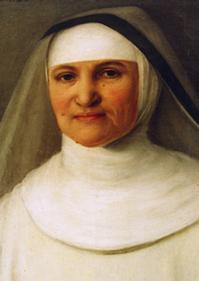A brief history of the Racine Dominicans
The Congregation of the Sisters of St. Dominic, now more commonly called the Racine Dominicans, was founded in Racine, Wisconsin, by Mother Benedicta Bauer and Mother Thomasina Ginker in 1862. The two nuns traveled from the monastery of Heilig Kreuz in Regensburg, Bavaria, in 1858, intent on establishing a motherhouse and school to teach children of German immigrants. After four years, the Regensburg Sisters gathered ten companions, purchased property in Racine, Wisconsin and began the foundation of our community serving the underprivileged and providing education in English and German to mostly working class immigrant students.
For more than 150 years, the Racine Dominicans have continued to build on this foundation begun by Mother Benedicta and Mother Thomasina in serving people in need through education. During the Racine Dominicans congregational peak, they served in over fifty institutions of learning. In addition to traditional roles in the field of education, the Racine Dominicans currently serve as health care professionals, social workers, prison ministers, community organizers, environmentalists, counselors, administrators, cooks, pastoral ministers, artists, spiritual directors, musicians, peace activists, researchers, college professors, writers and more. They are living in eight states in pursuit of truth and justice throughout the world.

Mother Benedicta founded Sisters of St. Dominic of St. Catherine of Siena in 1862
After nearly two years of teaching in Williamsburg, New York, with sisters sent there earlier from Heilig Kreuz by Mother Benedicta herself, they had attempted foundations first in Nashville, Tennessee (1860), and then in Green Bay, Wisconsin (1861).
The first, however, had never come to be because of the disarray of the German community in Nashville. The second had failed after only a year because the German Catholics of Green Bay were too poor to support even the simplest of schools. But by 1862 the two Regensburg nuns had already gathered ten companions, and with the purchase of property in Racine they began a foundation which would in 1877 be formally incorporated into the Dominican Order.
Commitment to Immigrants and Education
This foundation, as so many others of the era, grew out of the movement of cloistered European nuns who sent members to the United States to work with immigrants of their own ethnic backgrounds. Maria Benedicta Bauer's work in this country was marked from the beginning by a determination to Americanize.
She emphasized in all of her advertising for her schools that both English and German would be used. As she had in her schools in Bavaria, she recruited as students especially children of the working class. The latter emphasis continued strong in the community after Mother Benedicta's death in 1865. Efforts at adapting to the American culture, however, were much weaker in her successors, and for years the Racine Dominican community remained heavily German, especially in its internal life.
The Racine Dominicans would serve as educators in many schools in Racine, Wisconsin and throughout the United States for 150 years beginning in 1862. Mother Benedicta Bauer and her small band of sisters founded St. Catherina Female Academy in 1864. It became St. Catherine's High School and continues to this day. On August 1, 2018, St. Catherine's became part of the newly-founded Siena Catholic Schools in Racine operated under the Archdiocese of Milwaukee, and is no longer a sponsored ministry of the Racine Dominicans. However, a member of the Racine Dominicans will sit on the Board of Trustees for the indefinite future.

